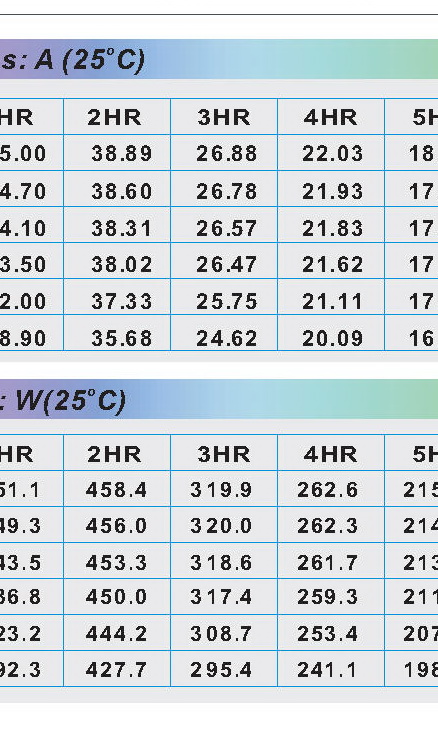Follow along with the video below to see how to install our site as a web app on your home screen.
Note: This feature may not be available in some browsers.
Dealer is only worried about his complains about battery. Statics show some 70% batteries ara damaged due to wrong charging. He is not that technical but every battery dealer knows somthig about 1/10th ratio as it is standard practice for car batteries (lead acid) to charge at 1/10th rate of battery capacity. He is telling otherway round.Thanks for suggestion.
But dealer is asking that one can only draw current from battery 1\10 of total capacity.
I mean if a battery,s capacity is 100Ah.
So,max load should be only 10amp(10*12=120watts).
Battery specification is as below,
12V 100AH/10HR(VRLA BATTERY).
He is emphasising on capacity/10HR.
HR mean hour rate.
That,s why i consult data sheet at manufacturer,s web site.
But could not understand charts of constant discharge current.
Thanks for suggestion.
But dealer is asking that one can only draw current from battery 1\10 of total capacity.
I mean if a battery,s capacity is 100Ah.
So,max load should be only 10amp(10*12=120watts).
Battery specification is as below,
12V 100AH/10HR(VRLA BATTERY).
He is emphasising on capacity/10HR.
HR mean hour rate.
That,s why i consult data sheet at manufacturer,s web site.
But could not understand charts of constant discharge current.

I urge to purchase this battery from DAV,college road Rawal pindi.Datadheet also says, you can take 1000A for 5 seconds eg use it for spot welding.
Internal resistance 5-mohm. At 25 Ampere, maximum 4 hours needed to fully charge.
You will get at least 3 hours backup at 300 watts load.

25 to 30 amperes for charging and discharging equels 300watts.
From where you are getting this battery and at what price?
Thanks.Hi,
Controlled current capability is designed in the main circuit. And if there is a microcontroller in the control circuit it is embedded in the program and if it is a discrete design then it has a feedback system which controls the Series elements (Thyristors or Triacs) to control the main charging transformer for the preset Amparage.
HI,how can i set charging current at 10amp.Hi ! pnjbtr
no you should not charge this 100AH battery with 30 amps current
The hard and fast rule is to charge at 1/10 th the battery AH capacity, so for this 100AH battery you need to charge at 10 amps max current to give long battery life.
The battery dealer has wrong concept of charging